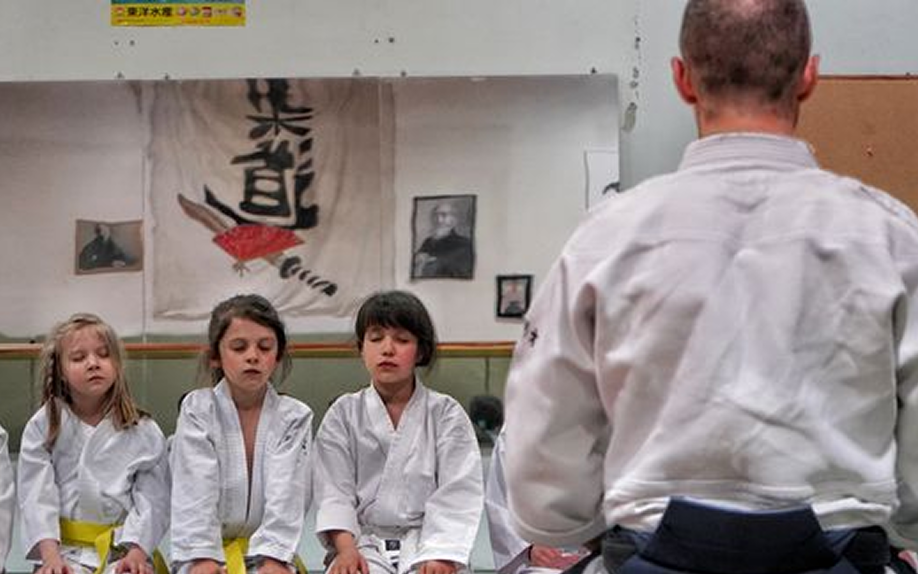
An instructor’s warm greeting, organized routines, and calm transitions help children feel secure and ready to learn. Simple rituals—like lining up shoes or earning stickers—create structure and belonging, encouraging confidence and focus from the very start of every class.
Imagine a nervous 4-year-old holding a parent’s hand in the dojo lobby. The child notices all the tiny shoes and uniforms. A friendly instructor kneels down and greets them by name. Soon, the child is smiling and bowing with confidence. This post gives a simple, practical tour of a Little Dragons preschool Taekwondo class in nine easy points. Quick note: about half of martial arts students are under 18, so millions of kids train in styles like Taekwondo across the U.S. Your child will be in good company.
1. A Welcoming Arrival
An instructor greets each child by name with a smile. Kids line up their shoes or bags in a neat row. Parents usually check in while the instructor leads a short settling routine. That could be shoes off, a quick welcome circle, or a sticker for trying. The routine helps children feel safe and part of the group. Parent tip: Arrive a few minutes early so your child can adjust. Let them bring a small comfort item if it helps.
2. Simple, Playful Warm-ups
Classes start with short, fun activities like animal walks, dancing, or silly stretches. You might hear “Hop like a frog” or “Reach like a dragon.” These games get kids moving without making them feel like they are exercising. Even a five- to ten-minute warm-up builds strength, balance, and focus. Parent tip: Join the fun from the sidelines. Clap or cheer. The goal is to have fun, not to be perfect.
3. Clear, Short Instructions
Instructors show each move slowly and break it into tiny steps. For example, a front kick might be shown as standing, lifting the knee, then kicking gently. Kids hear short, repeated cues and watch demonstrations. This helps them follow along and feel successful. Parent tip: Use the same simple words at home. If the class says “kick and punch,” say that too. It makes practice easier.
4. Lots of Positive Reinforcement
Teachers celebrate every try with high-fives, stickers, or praise. Even small efforts get noticed. A shy child who tries a punch will hear “Great job” and feel proud. That kind of encouragement builds confidence and keeps kids trying. Parent tip: Praise effort at home the same way. Saying “You worked hard” helps the learning stick.
5. Basic Skill Practice Through Games
Drills are turned into play. A balance beam becomes a “bridge to the castle.” Balloons or soft targets make kicking a game. These activities teach balance, coordination, and listening while kids laugh and play. Parent tip: ask your child about the games. Name a couple, like “Bridge to the Castle” or “Balloon Kick.” It helps them remember what they practiced.
6. Short, Structured Attention Exercises
You will see quick listening and turn-taking games. The instructor might say “Freeze” and expect the class to hold still. Or kids take turns following a short sequence of moves while others watch. These moments teach self-control and focus in a way that fits preschool attention spans. Parent tip: try a one to two minute quiet game at home, like “Red Light, Green Light.” Small practice makes it easier to follow instructions in class.
7. Gentle, Age-appropriate Discipline
Rules are simple: no hitting, use gentle hands, and walk inside. If a child bumps another, the teacher calmly models the right action and says something like “gentle hands.” Discipline is about safety and respect, not punishment. Parent tip: Use the same phrases at home. When home and class use the same words, kids learn faster.
8. Short Cool-down and Circle Time
Class ends with a few stretches and a short circle where children share a highlight. The teacher may ask, “What did you like best today?” or invite a child to show a move. This wrap-up reinforces learning and builds speaking and listening skills. Parent tip: On the way home, ask similar questions to show you care and help the lesson stick.
9. Clear Next Steps for Parents
Before leaving, the instructor gives a quick update about what the child did and one small thing to practice at home. You might also hear about upcoming events like a parent night or demo. Knowing one simple practice to do helps your child improve faster. Parent tip: ask for one quick thing to practice. Five minutes a day of a fun move makes a big difference.
Key Takeaway
By the end of class, that nervous little one is usually smiling, proud of a sticker or a small achievement, and excited to come back. Little Dragons classes are short, playful, and full of social and motor-skill benefits. They focus on safety, respect, and fun. If this sounds like the kind of experience you want for your child, consider stopping by Gabel Martial Arts in Summerville. You can watch a Little Dragons class or ask questions with no pressure. We would love to welcome you for a trial visit and show how Taekwondo helps little ones grow in confidence and joy.